Renewable Heat: Staying Warm and Eco-Friendly in Winter 2023
As winter approaches, keeping our homes warm is a basic need for families and businesses. Although we might not actively think about it, we crank up the furnace or plug in the space heater when the temperature outside drops. While these traditional heating methods may provide comfort and warmth, they often come at a cost to the environment. However, as many people consciously try to leave behind a smaller carbon footprint, renewable heat offers a sustainable approach to staying warm that harmonizes comfort with eco-conscious living.
Let’s explore the innovative landscape of renewable heating and the steps to keep warm and eco-friendly during winter 2023.
Is heat renewable?
Renewable energy refers to sustainable sources of power derived from natural elements like sunlight, wind, water, and geothermal heat. These resources can be replenished naturally and indefinitely, making them environmentally friendly alternatives to finite, non-renewable resources such as fossil fuels.
Learn more about Texas Renewable Energy.
Heat itself is not a renewable resource in the same way sunlight or wind can be considered renewable. Heat is a form of energy that can be generated from various sources, both renewable and non-renewable. What makes a heating system renewable is the source of energy it uses. Renewable heat typically refers to heat generated from sustainable and replenishable resources such as solar energy, geothermal heat, or biomass. In these cases, the energy source is continually replenished by natural processes, making it environmentally friendly and reducing reliance on finite fossil fuels. While heat itself is not renewable, the methods we employ to produce and utilize it can indeed be sustainable and contribute to a more eco-friendly energy landscape.
Heating Your Home with Renewable Energy
Heating your home with renewable energy is a sustainable and environmentally conscious choice that reduces your carbon footprint, contributes to a cleaner and greener future, and can lower utility bills.
Let’s review some of the best options for heating your home this winter with renewable energy (source).
Geothermal Heat Pumps: Also known as ground source or water source heat pumps, these systems make homes cozy by efficiently transferring heat to or from the ground. Geothermal heat pumps use the earth, or water in the earth, for their heat source or heat sink.
These pumps achieve superior efficiency compared to air-source heat pumps. While they may cost more upfront, geothermal heat pumps prove cost-effective in the long run by recouping the additional investment through energy savings in 10 to 15 years.
Air-to-Air Heat Pump: Commonly referred to as a “ductless mini-split,” these systems transfer heat from the air outside to the inside of your home through fan coil units or ‘blowers’ to increase your home’s air temperature. Air-to-air heat pumps are considered energy-efficient, as they move heat rather than generate it.
Solar Water Heating: Harnessing sunlight, solar water heaters warm your home’s water using solar collectors and insulated storage tanks. When sunlight is scarce, a backup system, like conventional water heaters, ensures a steady supply of hot water.
Biomass Boiler: Uses biological materials as fuel, also known as biomass, to generate heat. Biomass comprises organic materials like wood, crop residues, and animal manure. These renewable and sustainable resources can be burned directly for heating or converted into a gaseous or liquid fuel that can be used in a boiler.
Wood Stoves: Serving as a supplementary heating option, wood stoves lessening reliance on other energy sources. Besides being renewable, wood is often more cost-effective than gas, oil, or electricity. Make sure to adhere to the U.S. EPA regulations and local codes when installing a wood stove.
Tips on saving money on electric bills during winter 2023
Installing a renewable energy system can be pricey. Although it’s a great investment, you might not be ready yet to make the purchase. In the meantime, there are still things you can do to save money and be environmentally friendly when heating your home this winter.
- Take advantage of holiday sales and government incentives and upgrade your appliances to ENERGY STAR® Seal. Visit www.CleanEnergy.gov to learn more about the tax credits, rebates, and other incentives available to help you make clean energy upgrades in 2023 and beyond.
- Winterize your windows. Significant heat loss in your home occurs through the windows, particularly those lacking insulation for cold weather. To combat this, it’s crucial to secure and weatherize windows effectively. Ensure a tight seal by caulking small gaps, applying weatherstripping to movable parts, and considering using window attachments. These measures collectively prevent heat from escaping and cold air from infiltrating your home during the winter months.
- Replace your HVAC filters. Clean filters ensure that your heating system operates efficiently, allowing warm air to circulate freely. Clogged or dirty filters force the system to work harder, consuming more energy and potentially leading to higher utility bills. It’s a small investment that pays off.
- Adjust or program your thermostat. You can fine-tune your home’s temperature based on your schedule. Lowering the temperature when you’re away or asleep reduces the workload on your heating system, resulting in energy savings and lower utility bills. Programmable thermostats make creating a customized heating schedule easy. If you have a traditional thermostat, consider upgrading to a Smart Thermostat. Learn how to install a smart thermostat here.
- Keep warm with your ceiling fans. Ceiling fans can contribute to energy savings and cost reduction in the winter through a feature often overlooked: the reverse or clockwise rotation setting. In cold weather, setting your ceiling fan to rotate clockwise creates an updraft, effectively redistributing warm air that naturally rises to the ceiling. This helps to circulate the heated air more evenly throughout the room, preventing it from accumulating near the ceiling and encouraging a more uniform temperature. As a result, you may feel warmer without having to increase the thermostat setting.
- Use a timer on your holiday lights. Running your festive lights throughout the night can be an unnecessary energy drain, and manually turning them off might not always be convenient or desirable in cold weather. By incorporating smart plugs into your holiday light setup, you can easily program them to automatically switch on and off, ensuring a hassle-free solution to reduce energy consumption during the holidays.
Save Money on Your Electric Bill with Payless Power’s Prepaid and Traditional Plans
As we navigate the chill of winter, let’s remember that staying warm and being environmentally conscious can go hand in hand. Whether through adopting renewable heating technologies or implementing energy-saving practices, we have the power to make a positive impact on both our comfort and the planet.
Sources
What our customers are saying
See why our power customers say we're the best electricity provider in Texas!
I was worried about getting electricity for my home through a prepaid company. I was calling around to see different rates then going through all the hassle of credit checks while dropping points each…
I have been with this company for several years and have been very happy since. Even when I moved, they made my usually stressful situation very easy and carefree. I recommend them to everyone that I…
I have enjoyed the service for 2 years now. In the beginning this service was planned to be temporary but with the service being so effective for me i decided to keep it for the long haul. I’m a happy customer.








